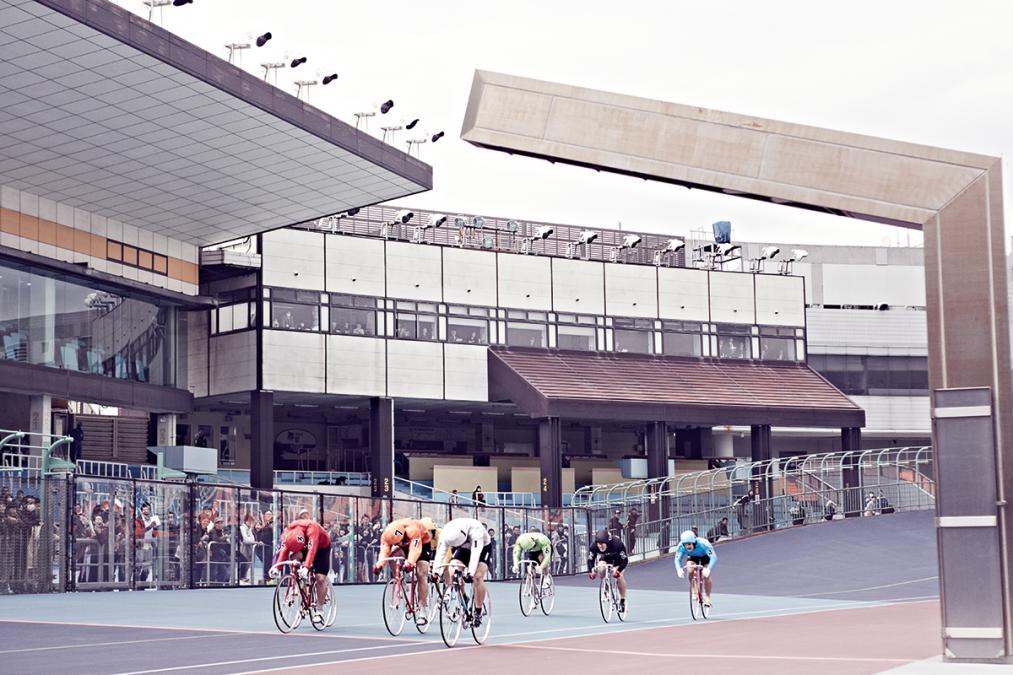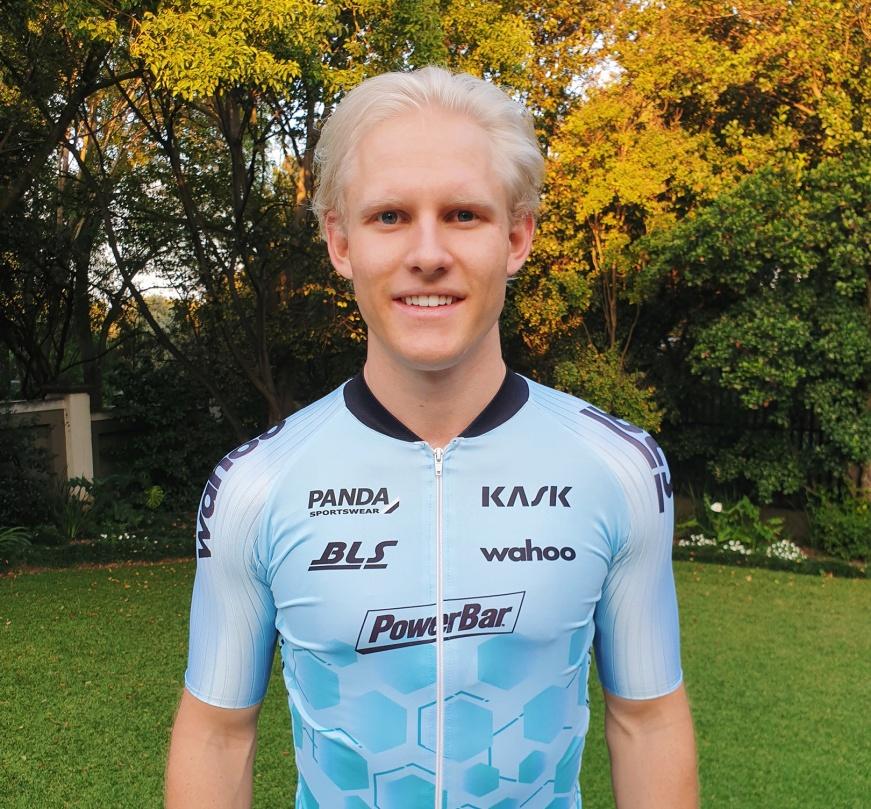
Keirin riders in Japan are likened to a modern version of classic samurai warriors. The main difference is that instead of weapons they use bicycles and the stage is the velodrome.
‘They take it so seriously,’ says British track cyclist Matt Crampton. ‘It’s so much more than just a sport there.’ Crampton took Bronze in the keirin at the 2008 World Championships, and as a result, gained himself an invitation to ride in Japan during the 2009 and 2010 seasons.‘There are opportunities to race in Europe, but keirin velodrome cycling doesn’t carry the same significance here as it does in Japan. For a sprinter, it is one of the great experiences – to go out to Japan and live, train, race and immerse yourself in the culture.’
The word has no direct translation to English, it is believed to originate in the city of Kitakyushu in 1948 from the Japanese words for ‘bike’, ‘race’ and ‘wheels. After World War 2 the Japanese economy was in a slump so the government built 70 velodromes around the country to be used for Keirin racing. It became one of only four sports that were legally allowed for public betting and was used as an attempt to boost local communities. Much in a similar fashion to horse racing, the community grew quickly and a well establishes culture became established.
Keirin riders must complete a year of study at the Japan Keirin School, where they get an education on ‘Spirit of self-control, honesty, affinity, skill, along with the knowledge necessary for a healthy physical and mental professional athlete.’ The school welcomes around 100 students each year aged between 18 to 22 out of a potential 1000 applicants. One does not need to have previous experience as a cyclist, the school believes that anybody with the right attributes can be trained to become a keirin rider.
Even international participants like Crampton are required to attend the school though with a previous experience they are run through a three-week crash course. ‘It was mostly classroom stuff, as there are a lot of strict rules,’ says Crampton. ‘You have to look a certain way; you have to race a certain way; you have to learn the system of how people bet on you. Then there’s mechanics, technique, and practical stuff with mock races. We even practised crashing, as there are rules for that too.’
From their cycling accessories, gear bag to the kit and toe straps - the keirin riders are uniform in their appearance and training.
This is just the theory-based side of what they learn, Australian Shane Kelly, an Olympic bronze medalist in the keirin and seasoned veteran of the Japanese velodrome circuit, reveals. ‘For the Japanese guys it’s pretty full-on,’ he says regarding the monastic boarding students. ‘They have a 6.30 am roll call, followed by drills and chores before breakfast, then a whole day of various forms of training.’ Hill climb efforts and exercises on the track precede lunch, followed by classroom work, a roller session, and simulation races in the afternoon. ‘They then have dinner and another roll call at 10 pm before lights out. It’s so regimented it’s almost militaristic. I would have loved it.’
Graduation day is highly ritualised with each student representing their home prefecture in a graduation race followed by graduation speeches. These speeches are emotional thanks from the riders who give thanks for their training and promise to bring honour to their families. It is not uncommon for some riders to break out into song or even use the ceremony to propose marriage.

Money Talks in Velodrome Cycling
While there are 45 keirin stadiums around Japan they are not often filled with crowds. Many attendees would rather watch the races on screens as for them their main interest is gambling. This importance to the sport goes as far as to have racers who cause a crash or those who prove themselves as tactically naive sent back to school. This is so they do not harm bets. Races are often scheduled to run along with the same dates that pensions are released as this represents the majority of the gambling demographic. Doping is also prohibited though the main reason for this is not based on moral issues it is based on doping riders affecting odds negatively.
Annual Keirin bets usually total over ¥1.1 trillion (R145.5 billion), winning riders can take home up to R2 million for a single meet. ‘Keirin is a career, not just a sport,’ Crampton confirms. ‘It’s a full-time job, where consistency and professionalism mean everything. As you go up the levels, it only gets more serious. ‘You have to nominate a tactic that matches your riding style. The two staples are the Senko and Makuri rider. A senko rider’s strength is endurance – they ride on the front and hope nobody can come round – whereas a makuri rider will sit on and sprint from behind. But there’s also Oikomi riders, who wait for the final 100 metres before sprinting. There are usually about three of each in a race, and although they wouldn’t discuss anything with each other, you would have three lines of riders, with rider types working together for their interests. It’s full contact too, and riders make use of that to protect their line… it can get pretty dicey.’
A riders ‘line’ is vital to their chances to win but is not the only consideration when spectators place bets. The serious crowd will consider thigh circumferences, form guides, starting positions and, for the truly dedicated, even blood groups and star signs.
Down to business
Keirin meets are naturally very functional and strict fitting Japan’s national stereotype. “When you go to a race meet you’re on lockdown,’ Crampton says. ‘Any device that could provide outside influence is taken off you as soon as you go through the gates, to stop you interfering with the bets. The riders stay in a big dormitory, four to a room, with a big communal dining area. It’s great because it lets you focus, get on with your job, and for us, internationals also to have a chat, a drink and integrate with the other riders.’ As one expects things get quite tense for riders. ‘The pressure builds for long periods, and you’ve got to be quite mentally strong – especially in the few minutes before starting. You warm-up, go to the waiting room while the other races are going on, then do your parade laps while everyone places their bets. Then we wait,’ Crampton says.
The riders wait in a specific enclosure pre-race. Here their bikes are inspected and they embark on various pre-race rituals. ‘Then we come out onto the track, bow, get our bikes, bow, look at the crowd, bow, look forward, bow, and finally strap in.’
Their cycling gear is pretty standard. Riders wear colourful but logo free jerseys along with simple helmets. They are only allowed a number as decoration and a coloured stripe on their shorts to dictate the category they are competing in. They also wear distinctive protective padding to protect themselves against regular crashes.
Bikes are fairly old-school made of steel for robustness. ‘There are trillions of Yen going through the keirin betting system, so everything has to be standardised to create a level playing field. Everyone has the same wheels, the same tyres, the same everything, and it must be approved with the stamp of the NJS [Nihon Jitensha Shinkokai – the governing body].’ Said Kelly. The only choice riders have is several standardised frame designs that can only be made by approved frame builders.
Interestingly one finds these rules are much relaxed in the women’s division, they are allowed to use carbon frames and disc wheels which many see as a key to the sport's sustainability. Cycling bags are standard. Created to help boost post-war regeneration Keirin’s DNA ties deeply to Japan’s history blending aggression with respect, spirituality with gambling. Perhaps it is these juxta positioning qualities that make it so interesting to watch the keirin velodrome races.





